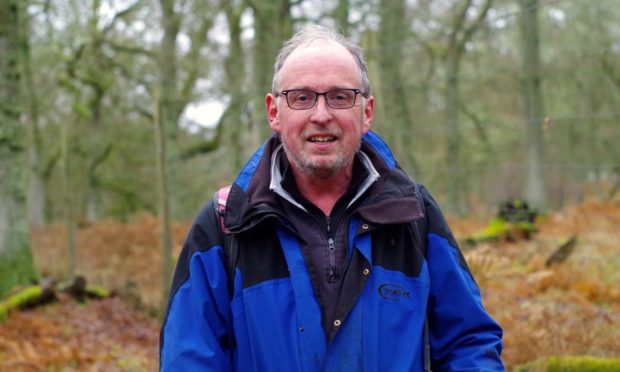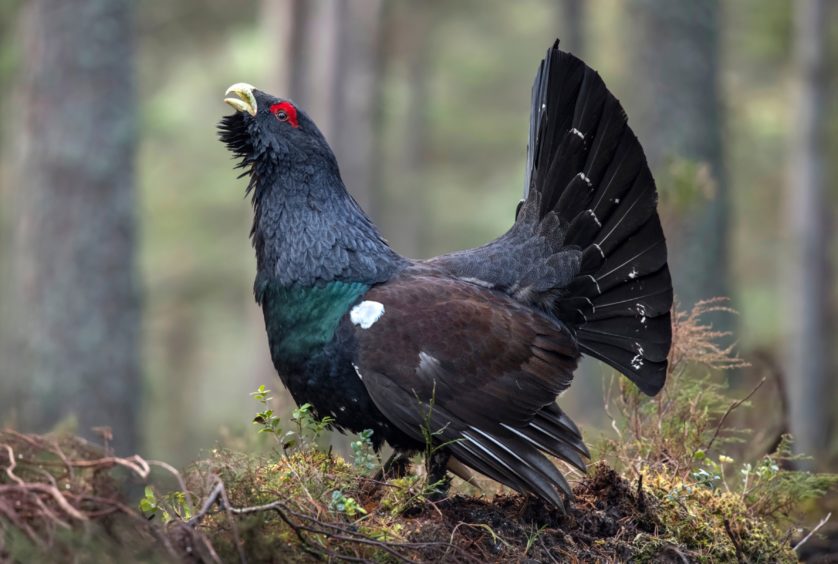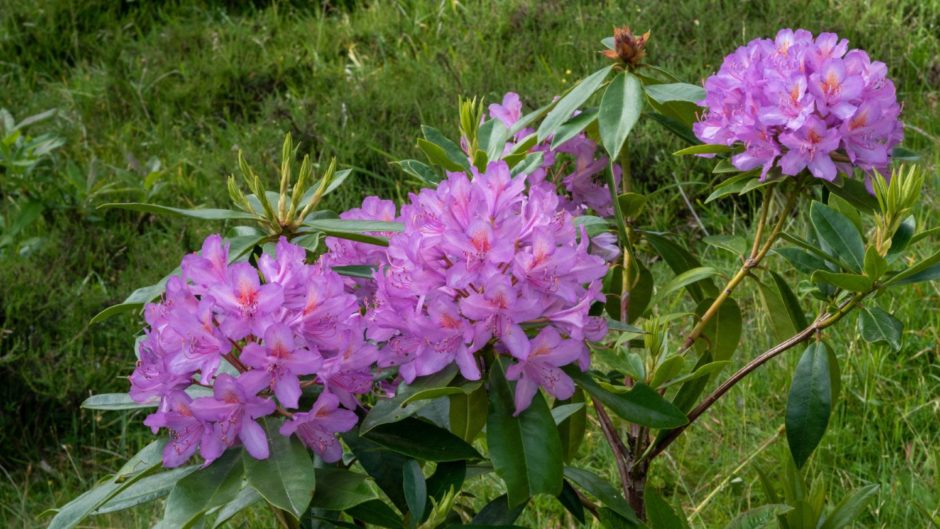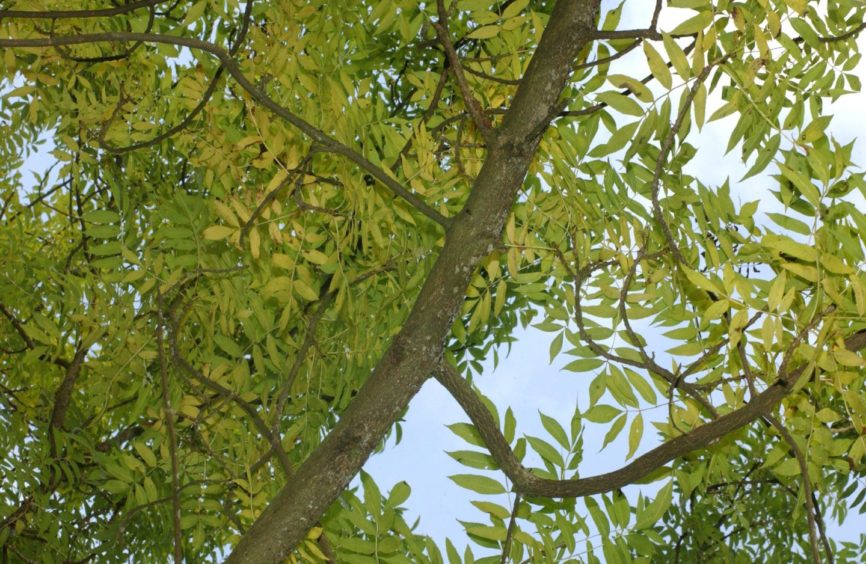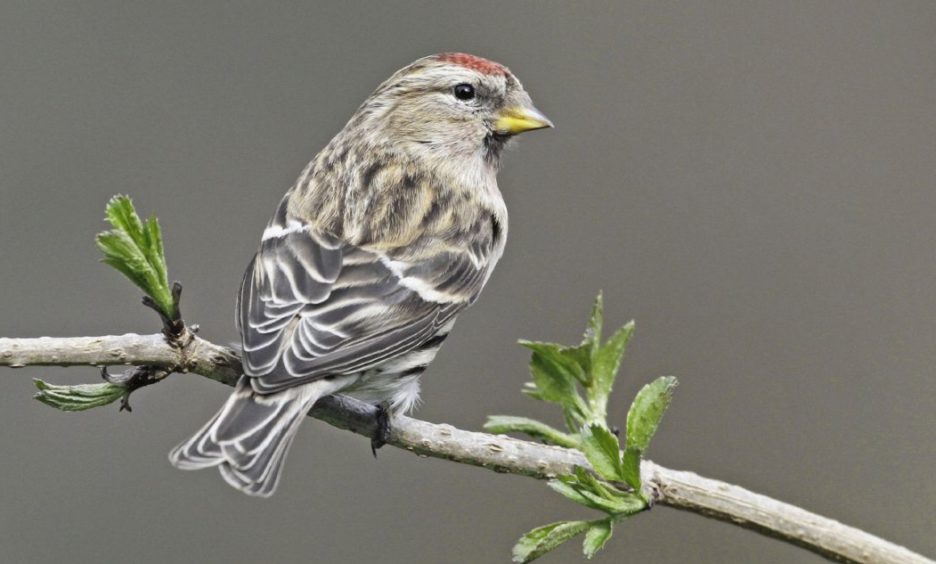Rampaging rhododendrons are one of the major threats to Britain’s native woodlands highlighted in a worrying new report.
The Woodland Trust’s report State of the UK’s Woods and Trees 2021 says just 7% of our native woodlands are in “good ecological condition”.
Declining bird numbers
A lack of nature corridors between isolated woodland habitats has had a devastating impact on some species.
Some woodland birds, including the lesser redpoll and capercaillie, have plummeted in numbers by 80% since 1970.
The fall in biodiversity is despite the overall area of woodland cover doubling over the past century. This is because most new woodland comprises non-native trees less suited to supporting native wildlife.
An estimated 50% of the remaining ancient woodland is damaged by commercial forestry plantations or rhododendron invasions.
Campaign to save local woodland
At Kinclaven Bluebell Wood in Perthshire, local volunteers are helping the Woodland Trust preserve their local woodland.
As well as helping to increase the woodland’s area by 50 acres, two thirds of its original size, they have also been ripping out rhododendrons that were overwhelming the ecosystem.
‘Nothing else is growing’
Ian Riches, who leads the Woodland Working Group at Kinclaven, said: “The rhododendrons have come from the Victorian era of the estate that owned the woods at that time, and who planted them.
“They were just in a corner of the woods but they have taken over over. When you consider that they are called Kinclaven Bluebell Woods, there is one area where we don’t get bluebells because the rhododendrons have just eradicated everything else.
“They are so thick that they have covered the area totally and nothing else is growing there.”
Volunteers managed to clear more than an acre of rhododendrons before lockdown halted efforts and plan to continue the campaign once Covid-19 restrictions allow.
Rhododendrons are just one of the may threats to native woodlands.
Disease could kill 80% of UK’s ash trees
Ash dieback, which threatens 80% of the UK’s ash trees, and overgrazing by herbivores such as deer were also highlighted in the trust’s report.
The trust said it is bad news for climate change because ancient woodlands play an important role as carbon “sinks”.
Although they make up just a quarter of all woodland in the UK, ancient woodlands tie-up 36% of all the carbon held by the country’s tree cover.
“The warning signs in this report are loud and clear.”
Abi Bunker, Woodland Trust.
Abi Bunker, director of conservation and external affairs at the Woodland Trust said: “The warning signs in this report are loud and clear. If we don’t tackle the threats facing our woods and trees, we will severely damage the UK’s ability to address the climate and nature crises.
“Our wildlife havens are suffering, and we are storing up problems for future generations.”
‘Woodland specialists’ decline by 80%
Overall woodland bird numbers, based on data for 37 species, have fallen by about a third since 1970.
Butterflies have also declined.
Some species have suffered more than others.
Birds considered to be “woodland specialists” including the lesser
spotted woodpecker, lesser redpoll, spotted flycatcher, capercaillie
and willow tit have all declined by more than 80% in the past 50 years.
Birds act as good indicators because they occupy a range of habitats and niches, and have well established monitoring programmes. They respond rapidly to environmental pressures that also affect many other species.”
State of the UK’s Woods and Trees 2021
The report said bird numbers were good indicators of the health of woodland habitats.
“Birds act as good indicators because they occupy a range of habitats and niches, and have well established monitoring programmes. They respond rapidly to environmental pressures that also affect many other species,” said the report.
Climate change, air pollution, imported diseases and development were also said to be threatening woodland.
Woodland Trust Scotland public affairs manager Arina Russell added: “Native woodland must be a major part of woodland expansion, to help nature recover. We need more native woodland connecting and expanding existing woods and replacing lost trees outside woods.”
